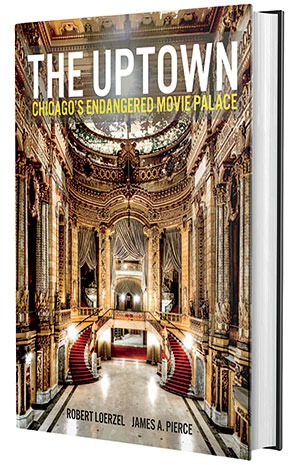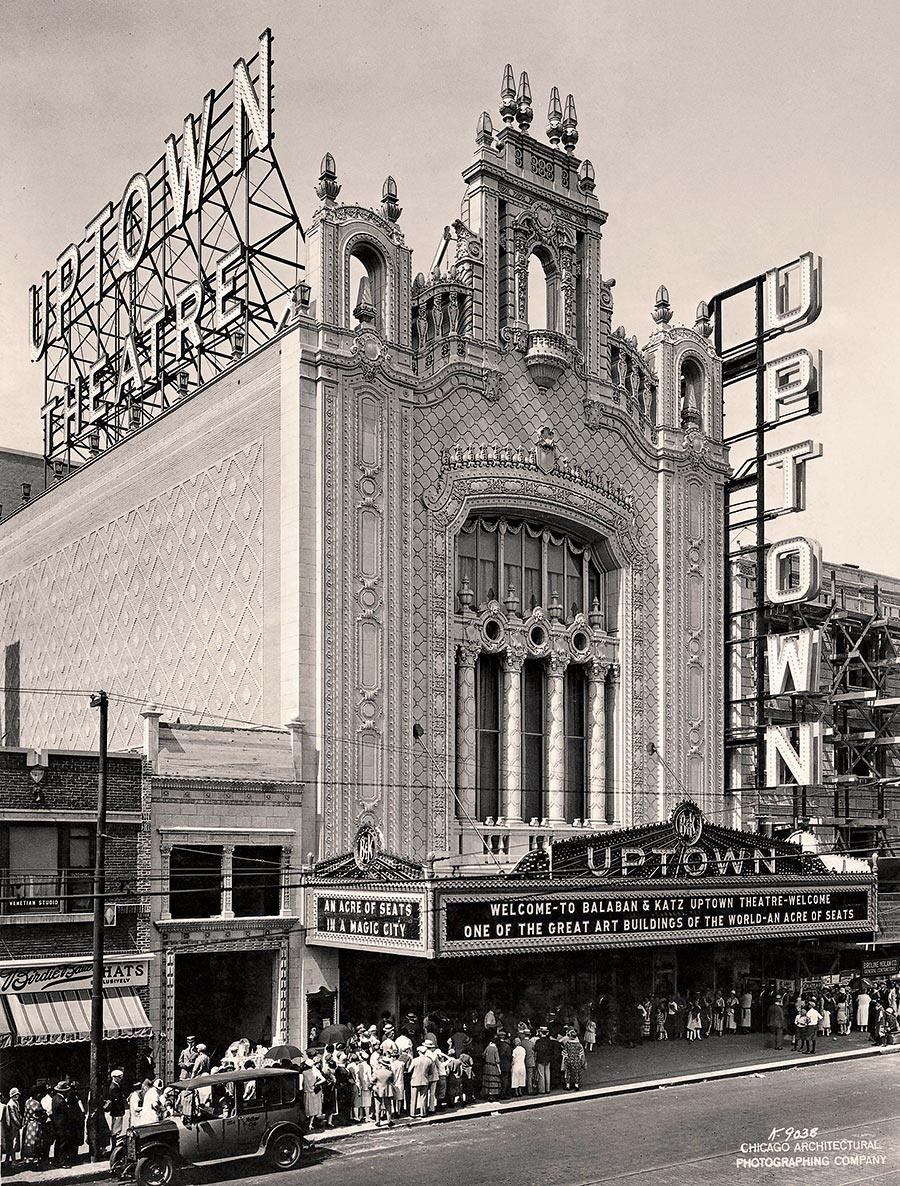
1 In designing the Uptown, more was more.
“It outdoes your dreams,” rhapsodized an ad touting the theater’s 1925 opening. That wasn’t just hype. As documented in The Uptown: Chicago’s Endangered Movie Palace, by Chicago contributor Robert Loerzel and James A. Pierce, the colossal theater reflected the excesses of the Jazz Age. The architectural firm Rapp & Rapp took inspiration from royal palaces, modeling the Uptown after “an idealized Spanish Renaissance castle.” With a budget of more than $4 million (about $74 million today), the local theater chain Balaban & Katz spared no expense, including travertine marble from Italy and shipped-in paintings, statues, and murals. The Uptown dazzled with state-of-the-art lighting and sound — and the glories of air conditioning.
2 While the theater was royal in design, its mission was democratic.
The owners aimed to provide an escape for everyday working people. They charged the same for all 4,300-plus seats and even set up a fairy-tale-themed nursery, with a merry-go-round and rocking horse. In his memoir, quoted in the book, co-owner A.J. Balaban describes his goal as making every man a king. Like his partners, Balaban grew up in a modest Jewish immigrant enclave on the West Side: “I felt responsible for making these people happy and gay, to release them even for a moment from the depression of their drab homes and usually burdened lives.”
3 The theater’s staffing policies would not pass muster with HR today.
Balaban & Katz selected employees as if casting a play, with startlingly specific race and aesthetic requirements. For the job of footman, assisting those who arrived by limo at the Broadway entrance, the company manual stipulated: “a colored man, about 6 feet in height, medium heavy, erect, about fifty years of age, preferably with some gray hair, approaching the old southern coachman type.” For ushers, the guide called for men “seventeen to twenty-one years old, about 5 foot 7, weighing 135 to 145 pounds, who were ‘keenly alert’ and looked as if they came from ‘wholesome homes of refinement.’ ”
4 Jerry Garcia met his baby mama there.
With the rise of rock, the Uptown found a new revenue stream beyond movies and variety shows. From 1975 through 1981, the theater hosted more than a hundred concerts, featuring everyone from Bruce Springsteen to Bob Marley. The band that played there the most — 17 times — was the Grateful Dead. Frontman Jerry Garcia once remarked that he enjoyed the relaxed vibe. The Uptown security guards even allowed smoking, “resulting in a cloudy atmosphere during Dead shows,” a witness recalls in the book. It was at one such show, in 1978, that the recently divorced Garcia met a fan, Manasha Matheson, a student from Shimer College, located in Waukegan at the time. That led to a yearslong relationship (which they considered a marriage but was not legally binding) and a daughter.
5 The decaying theater has been held together by a band of “guardian angels.”
After the Uptown’s closing in 1981, volunteers, including former employees, kept the dilapidated building from falling into total ruin, scrubbing and painting over graffiti, clearing debris from roof drains, even tracking down looted treasures, such as light fixtures. The book recounts how longtime caretaker Dave Syfczak prevented a frozen-pipe catastrophe in 2005: Sitting up all night, he used a “torpedo kerosene space heater and small torch to warm the city water main little by little … and through the next frigid week.” Estimates for renovation exceed $100 million, which event promoter Jerry Mickelson, who bought the property at auction in 2008, says would be best accomplished with a public-private partnership.



